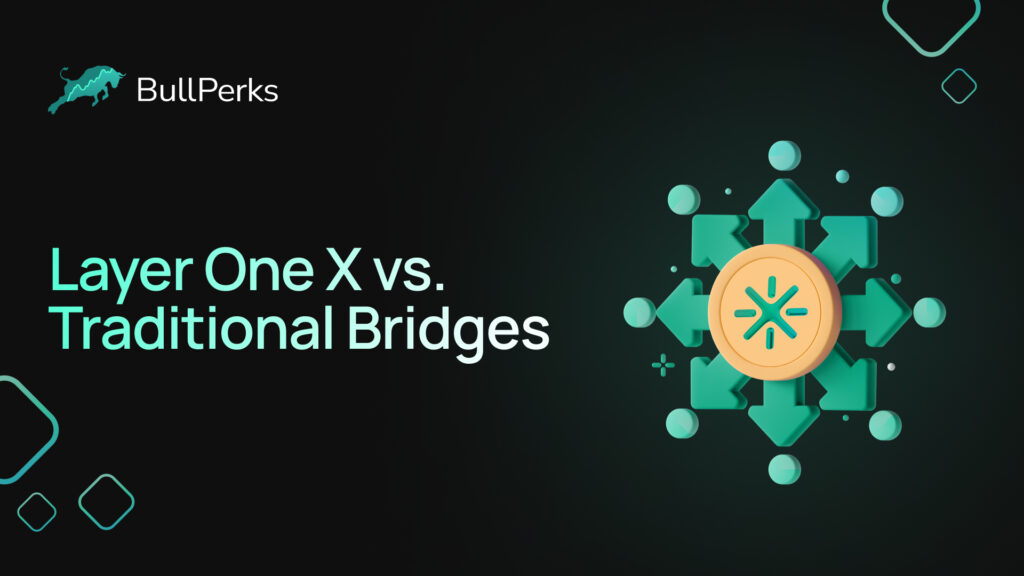
Understanding the Basics of Traditional Bridges
In the realm of structural engineering, traditional bridges are a pivotal element in transport infrastructure, designed to facilitate the crossing over physical obstacles such as bodies of water, valleys, or roads. The basic components of a traditional bridge typically include the foundation, piers, abutments, deck, and superstructure. These elements are strategically designed and arranged to ensure maximum structural integrity and longevity.
The concept underpinning the function of traditional bridges is relatively straightforward. Static loads, including the bridge's own weight and additional elements such as light posts or rails, as well as dynamic loads, like vehicles, pedestrians, or weather ramifications, are effectively supported and processed by the bridge's structure. The load is primarily received by the deck and consequently transferred through the superstructure to the pier or abutment, which ultimately disperses the load to the bridge's foundation and into the earth. This ingenious design and functionality have consistently ensured the effective and safe conveyance of various forms of traffic across obstacles, contributing to the overall effectiveness of transportation networks worldwide.
The Key Advantages of Traditional Bridges
By advantageously leveraging tried-and-tested architecture, traditional bridges decidedly serve as effective implements for simple and direct network connectivity. A key strength lies in the straightforward operation of these bridges since they primarily function with MAC (Media Access Control) addresses, facilitating effortless data transfer between devices on a network. This ease of function is undeniably a significant benefit for any networking environment.
Moreover, traditional bridges are configured to deal effectively with collision domains thus leading to a stable and controlled networking environment. They restrain network collisions by creating segregated collision domains, which resultantly increase the overall efficiency of network operations. Furthermore, because of their uncomplicated nature, traditional bridges are peeled of advanced functionalities that may require intensive management or control sequences thereby, marking a lowered administrative overhead, particularly for small to medium-sized networks. It is explicit that traditional bridges' innate characteristics beautifully amalgamate simplicity and efficiency, delivering a sterling performance in networking connectivity.
The Drawbacks of Using Traditional Bridges
While traditional bridges unquestionably hold a strategic position in terms of connectivity and transportation, they carry certain significant disadvantages. To begin with, the construction time of a traditional bridge is significantly longer, ranging from a few years to even a few decades. This extended period can significantly impact the humanitarian, economic, and environmental aspects of the surrounding regions. Furthermore, these structures, predominantly built using steel, concrete, or a combination of both, require extensive maintenance over time due to wear and tear resulting from weather conditions and load-bearing factors.
Another key drawback is the expense associated with the design, construction, and maintenance of traditional bridges. The financial implications of these projects night significantly burden the budgets set by municipalities, cities, or even countries. Finally, traditional bridges are inflexible structures. Once built, they cannot be easily modified, extended, or relocated without huge investments and time. This inflexibility often inhibits urban development and evolution, especially in dynamic and rapidly-growing metropolitan cities.
Exploring the Fundamentals of Layer One X
Layer One X, often known as the physical layer, serves as the framework for all networking activities. This initial layer of the Open Systems Interconnection (OSI) model is primarily concerned with the transmission and reception of raw bit streams over a physical medium. It interacts directly with the system's hardware and focuses on protocols, network topology, hub, switch, matrix switch, repeaters, network interface cards, host bus adapters and more. Additionally, Layer One X helps to establish and terminate connections to a communications medium.
More into its functions, Layer one X plays a critical role in setting up, maintaining, and deactivating physical connections for data transmission. Issues such as layout planning, cables specifications, network and signal integrity, bit synchronization and transmission, encoding and decoding, delineation of data into frames, transport timing and speed all fall within the ambit of Layer One X's responsibilities. This layer also provides mechanical, electrical, functional, and procedural methods for activating, sustaining, and deactivating the physical link between end points in a network path for data exchange.
The Major Benefits of Layer One X
One of Layer One X's most enticing features is its inherent scalability. Layer One X's scalable design is a distinct advantage, allowing for an ever-growing number of users and transactions. The network easily expands to accommodate these factors, maintaining smooth operation without slowing down or bottlenecking—an issue common with traditional bridges. This scalability extends the network's usefulness, capable of supporting businesses as they grow and develop.
Another significant advantage of Layer One X is its robust security mechanics. The network's foundational layer is designed around a secure protocol that ensures data integrity and safeguards against security breaches. In comparison with traditional bridges, Layer One X emerges as a network alternative better equipped to handle the increasing security demands of the digital age. The layered security system provides front-line defense against external threats while maintaining internal data integrity. This level of security is vital for businesses that prioritize data protection.
Potential Limitations of Layer One X
Despite the numerous benefits Layer 1 X avails, there are potential limitations that users must consider when choosing this technology for network connectivity. The complexity of its architecture can initially be daunting for engineers that are less familiar with it. Not only does Layer 1 X require a comprehensive understanding of its functionality and operation, but it also necessitates intensive training and technical skills to manage, maintain and troubleshoot the technology effectively. This could potentially affect operational efficiency and response times to system issues, especially if the network team does not have the requisite knowledge and experience about Layer One X.
Additionally, while Layer One X's advanced capability for scalability is undoubtedly advantageous, this could potentially also present a drawback as the network scales and becomes more intricate. As the number of devices and connections increase in the network utilizing Layer One X, so does the complexity of managing and maintaining it. The increase in complexity inevitably leads to the need for more resources and further technical skills, which could result in escalating operational costs. This makes Layer One X a less ideal solution for small to medium-scale businesses with limited resources and financial flexibility or organizations with less complex network requirements.
Comparing the Performance of Traditional Bridges and Layer One X
Traditionally, bridges have been pivotal in carrying data across networks, boasting simplicity in structure and compatibility with an array of devices. They operate on a principle of automatically discerning and understanding the destination addresses within transmitted packets to effectively guide data across the network.
Meanwhile, Layer One X, a more modern networking solution, is chiseled to optimize network performance. With a design focus on scalability and speed, it can manage thousands of traffic flows in parallel. The functionality is superior and it surpasses traditional bridges by operating at a higher network hierarchy. Layer One X introduces an elevated level of control, ensuring efficient transmission, and includes features such as quality of service (QoS) parameters that target specific network requirements. In terms of performance, Layer One X appears to offer a more reliable, and faster data transmission medium compared to traditional bridges. Nonetheless, both networking entities continue to play significant roles in modern network infrastructures, each with their own governing attributes.
The Role of Traditional Bridges and Layer One X in Network Connectivity
Traditional bridges play a crucial part in network connectivity by transmitting data between different network segments. Acting as the intermediary, they help individual computers or devices within a network to communicate with each other effectively. Via the application of the spanning tree protocol, traditional bridges are able to prevent loops and guarantee a free flow of data packets, thereby optimizing network function. This simple yet efficient technology has been a mainstay in enhancing network connectivity and serves as the groundwork for more advanced networking solutions.
On the other hand, Layer One X, often referred to as the physical layer, presents a more sophisticated approach to network connectivity. Not only does it facilitate the transmission and reception of data, but it also regulates the physical and electrical layouts of devices and systems. Layer One X has an inherent flexibility which allows the incorporation of various types of media including wired, wireless, and optical connections. Serving as the foundation of the OSI model, it intensifies the effectiveness of data communications by supporting a plethora of networks and protocols.
FAQ
What are the basic principles of traditional bridges in network connectivity?
Traditional bridges are hardware devices used to connect multiple networks at the data link layer of the OSI model. They read the MAC address of devices connected to them and decide where to forward data based on this information.
Can you elaborate on the key advantages of using traditional bridges in network connectivity?
Traditional bridges help in the reduction of traffic in a network by dividing it into two segments. They also aid in the expansion of a network by connecting different segments. Moreover, they have a self-learning capacity that aids in better data traffic management.
Are there any drawbacks or limitations to using traditional bridges?
Yes, traditional bridges have some limitations. They can create loops in the network, leading to disrupt network operations. Also, they operate only on the MAC address, making it harder to control user access. They are also less efficient when dealing with large networks.
Could you provide a simple explanation of what Layer One X is?
Layer One X, also known as L1X, is a next-generation networking protocol designed to enhance the scalability and interoperability of blockchain networks. It is designed to improve the performance, reliability, and security of network connectivity.
What are the primary benefits of using Layer One X?
Layer One X provides several benefits like improved scalability, enhanced network performance, increased interoperability between different blockchain networks, and better security measures. It is designed to handle large volumes of transactions efficiently.
Are there any potential limitations of using Layer One X?
While Layer One X offers many advantages, it might have some limitations. As it's a relatively new technology, it may face compatibility issues with existing infrastructure. Moreover, it requires a higher level of technical understanding to implement and manage.
How do traditional bridges compare with Layer One X in terms of performance?
Traditional bridges are excellent for reducing traffic and expanding small to mid-size networks. On the other hand, Layer One X is designed to handle much larger network volumes and offers superior scalability and interoperability, making it more suitable for larger, more complex networks.
What is the role of traditional bridges and Layer One X in network connectivity?
Both traditional bridges and Layer One X play a crucial role in network connectivity. Traditional bridges connect multiple networks at the data link layer, helping reduce traffic and expand the network. Layer One X, on the other hand, enhances the scalability and interoperability of blockchain networks, improving performance, reliability, and security.
Would you like to start investing in the most promising crypto projects? Learn how to invest with BullPerks, the fairest and most community-oriented decentralized VC and multichain launchpad!
Disclaimer. This material should not be construed as a basis for making investment decisions or as a recommendation to participate in investment transactions. Trading digital assets may involve significant risks and can result in the loss of invested capital. Therefore, you must ensure that you fully understand the risk involved, consider your level of experience, investment objectives, and seek independent financial advice if necessary.












